- Administrator
- Albums and Singles

Following 2015’s remarkable Yellow Bell, Jasmine Guffond finally unveils her sophomore album for Sonic Pieces: Traced develops a broad sound spectrum that goes far beyond her previous efforts.
Influenced by digital surveillance technologies, Guffond examines data generated from facial recognition systems and global monitoring networks and translates their algorithms into auditory shapes. She draws sonic portraits that manage to capture what normally eludes human perception turning peripheral data into deeply engaging compositions. These pieces unfold through shifting drone patterns interspersed with refined cut-up vocal snippets. Commanding bass pulses are counterposed against assemblies of beats and subtly measured guitar. Emotionally suspenseful, the album alternately rises to intense highs that descend into soundscapes almost trance-like in affect. Collectively, the tracks on Traced attest to Guffond’s profoundly sensitive approach to communicating contemporary ideas re-imagined as intricately inventive tonal possibilities.
Traced is a living recording that sounds like something we are yet to encounter. It suggests humanity at the spot it has maneuevered itself into: surrounded by machines, humans have simultaneously become the traceable components of a much wider network. The album’s success lies in its ability to transform socio-technological observations into driving and compellingly expansive sonic structures.
Out July 7th on Sonic Pieces.
Read More
- Administrator
- Albums and Singles

Max Ravitz, aka Patricia, produces techno with a spelunker's wide-eyed exploratory flair. "As an instrument, the synthesizer is designed to theoretically reproduce any imaginable structure of sound," remarks Ravitz. "I've always been much more interested in sound design than being able to 'play well,' and the synthesizer allows for a slow and thoughtful approach towards crafting sound." He allows his machines to speak for themselves: "I occupy the role of a composer or conductor, in a sense, determining how the music sounds while employing my various instruments as the players."
Several Shades Of The Same Color is Patricia's first album for Spectral Sound — produced in produced in conjunction with his own label Active Cultures.
Each of Shades' three LPs features suites of tracks that, considered alone, comprise their own distinct, unique worlds. Disc One opens with "I Know The Face, But Not The Name," an unabashedly plaintive trip through classic electro rhythms; flip it over for "The Words Are Only Sounds," a haunting affair for synthesizer and voice. Disc Two's "The Electric Eye is Upon Me" swirls endlessly, while "Shiba Inu Dub" is cut for the floor and coy as its namesake. Disc Three's jackin' "Feel Your Body" will cause you to do just that; "German Friendship" sounds like D.A.F. on dissociatives.
Taken altogether, Several Shades Of The Same Color is kaleidoscopic, a multi-faceted techno trip. Listen in full, or listen in part. And if you consider only one of these intermittent listening notes, make it this one: Don't think; just hear.
Out July 14th on Spectral Sound.
Read More
- Creaig Dunton
- Albums and Singles
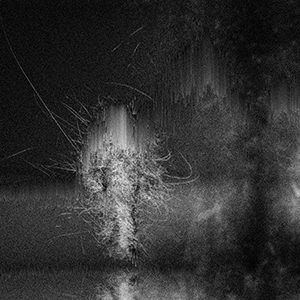 Brainwashed is happy to premiere the first song (and video) from Scratched Glass's new release, Two, due out July 7 on Negative Capability. The duo of Nicol Eltzroth Rosendorf and Jonathan Lukens are both multimedia artists, and this is evident on "Duet". The video's pulsating, digital/organic hybrid visuals perfectly accompany the sound: a lush mixture of warm, surging tones and skeletal beats that are hypnotic from beginning to end. The nine song album will be released on cassette (limited to 100 copies) and digital, and mastered by Lawrence English.
Brainwashed is happy to premiere the first song (and video) from Scratched Glass's new release, Two, due out July 7 on Negative Capability. The duo of Nicol Eltzroth Rosendorf and Jonathan Lukens are both multimedia artists, and this is evident on "Duet". The video's pulsating, digital/organic hybrid visuals perfectly accompany the sound: a lush mixture of warm, surging tones and skeletal beats that are hypnotic from beginning to end. The nine song album will be released on cassette (limited to 100 copies) and digital, and mastered by Lawrence English.
An exclusive preview of the album is available to stream here.
Physical and digital pre-orders are available now through Bandcamp.
Read More
- Administrator
- Albums and Singles
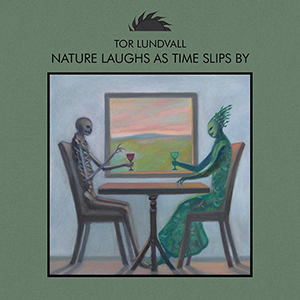 For his third boxed set on the label since 2011, prolific ambient artist Tor Lundvall collects another four previously released (but limited) albums and a rarities compilation into a diverse sounding, yet thematically unified collection. Essentially the soundtrack for virtual environments, such as rainy days or visiting a park, Nature Laughs as Time Slips By is another suite of beautiful, if often melancholy instrumental music that covers the vast spectrum of Lundvall’s beautiful work.
For his third boxed set on the label since 2011, prolific ambient artist Tor Lundvall collects another four previously released (but limited) albums and a rarities compilation into a diverse sounding, yet thematically unified collection. Essentially the soundtrack for virtual environments, such as rainy days or visiting a park, Nature Laughs as Time Slips By is another suite of beautiful, if often melancholy instrumental music that covers the vast spectrum of Lundvall’s beautiful work.
For me, Rain Studies is the defining album of this collection.Besides the obvious utilization of multiple field recordings of precipitation that appear throughout the album’s 13 pieces, his synthesizer work also does a perfect job at capturing the sound of those chilly, overcast afternoons largely spent indoors.Both "Girl Through a Rainy Window" and "Music in the Walls" blend these nature recordings seamlessly with minor key electronics and deep bell-like sounds that manage to capture the sonic encapsulation of haunting perfectly.For "City and Sea" Lundvall adds what almost sounds like a far off horse clopping, making for a bit of almost Foley work among the more traditional musical instrumentation.At the other end of the spectrum, "Distant Silver Light" features a rudimentary drum machine underscoring the ghostly sounds to make for an extremely diverse and unique sounding piece of music.
This grey mood stretches out into other albums in this set as well.On The Park, "Lakeside Rain" keeps that someone cold vibe, but also with bits of percussion and hints of melody, which comes together as a moody song with just the right amount of lo-fi character to it.For "Field Study", nature recordings and drifting tones are melded together, making for a piece that is less musical and more environmental in nature.On the other hand, "Woodland Path" features Lundvall working with a cheap sounding drum machine and heavier bass, resulting in a more dynamic, song-like piece of music. The same goes for the pulsating structure of "Closes at Dusk," a mass of dramatic synth sweeps that also make for a rich, haunting song.
The Violet-Blue House may be less weather-related, but the sound adequately reflects the dark, yet beautiful hues it is named for.On the whole, it is more of a glacial piece, gloomy and slow, but with a deliberateness to it.There may be a bit of percussion and melody on "Her Shadow," but those are secondary to the slow moving electronics to result in a more cinematic composition.There is a spaciousness to "Night Breeze," with hints of chimes to flesh it out, but as a whole there is a pleasant depressive murk to the sound.Field Trip, much like the name would suggest, comes across like a trip through various sights and sounds, working with a wide variety of songwriting.There is a vintage sheen to "Wall Clock," but the mix of music box like tones with what resembles a sputtering computer tape makes for an odd pairing.For "Green Metal Box," Lundvall goes in a very different direction with what sounds like a burbling 303 bassline blended with a tasteful hint of reverb.
The compilation, Insect Wings, Leaf Matter & Broken Twigs (Volume 2) is unsurprisingly a bit all over the place, consisting of songs recorded between 1991 and 1994).Given their age, having a low fidelity sensibility to them is not at all surprising, such as the pleasant hiss that surrounds the piano on "A Field in Spring Rain."Even though "Empty Warehouse (Mix 2)" at first sounds less polished, his blending of chimes and guitar, with excellent panning and arrangement, comes together as more developed sounding than it began."The Rain Garden in Spring" is also a mix of reversed instrumentation and obvious keyboards, but even with a simple arrangement the final product works perfectly.Also a standout is "Net-Wing," which is a mass of pulsating, arpeggiated electronics that is surprisingly rhythmic given the drifting tones and expansive synth pads that are most prominent across all of these albums.
There is a lot to take in on Nature Laughs as Time Slips By but, like the previous two compilation sets Dais has released, there is a unified, singular feel to the material contained on these five CDs.Taken in as a single set, or album by album, or even as a sampling from all of the discs results in a diverse set of moods and music to be heard.The mood may not always be the sunniest, but Lundvall’s work is never dull or lacking in variation.
samples:
 
Read More
- Administrator
- Albums and Singles
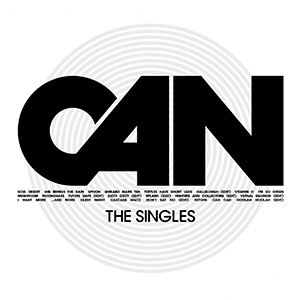 I must admit to still being a bit perplexed by this release. Can, for all their greatness, were never really a singles band. Most of those that were issued were edits of album material, so there is little exclusive material to be had here, barring said edits, which usually just remove material rather than presenting it in an appreciably different way, and a handful of non-album material. However, when viewed as a career overview or sampler (something essentially replacing those Cannibalism compilations), it is a different matter, and the set provides a good opportunity to revisit the latter, often maligned recordings.
I must admit to still being a bit perplexed by this release. Can, for all their greatness, were never really a singles band. Most of those that were issued were edits of album material, so there is little exclusive material to be had here, barring said edits, which usually just remove material rather than presenting it in an appreciably different way, and a handful of non-album material. However, when viewed as a career overview or sampler (something essentially replacing those Cannibalism compilations), it is a different matter, and the set provides a good opportunity to revisit the latter, often maligned recordings.
In the matter of full disclosure, I have always preferred my version of Can the sprawling, chaotic one.I have much more interest in another 30 minute version of "Spoon" or even potentially the full unedited "Yoo Doo Right" session than I do in hearing shortened mixes of songs I know.While I can objectively appreciate a lengthy piece such as "Halleluwah" pared down to just a bit over three minutes as revealing its core, loop-heavy essence, it will never replace the side long Tago Mago version.The Malcolm Mooney material is also somewhat underrepresented here, with just "Soul Desert" and "She Brings The Rain" appearing from his first tenure with the band.Admittedly, those are probably the two strongest works he was involved in for Can neophytes, but it does not really do much to reverse the trend of underappreciating his contributions to the band.
Many of the other songs here, especially the album edits, seem odd and out of place if compared to their original forms.Something like "Future Days," going from nearly 10 minutes to about three and a half is interesting, but not necessarily something I would prefer to listen to instead of the original.Even something like "Hunters and Collectors" is excised of a minute of its album length, where the original would have been just fine as a single in its original form."Mushroom" gets a slight tweaking to remove the segues from "Paperhouse" and into "Oh Yeah" but thankfully stays pretty much the same otherwise.
There are only a few non-album songs to be had; from the early Damo Suzuki days "Shikako Maru Ten" and "Turtles Have Short Legs," both previously available on Cannibalism 2.As someone who delved into Can's albums (skipping the aforementioned compilations), Imissed out on these two songs for a number of years.I cannot lie, having "Turtles" here and remastered may make it it worth the price of admission alone.Recorded during the Tago Mago sessions (it was the B side to the aforementioned edit of "Halleluwah"), it clearly did not fit in with the vibe of that legendary record.However, on its own, it is one of the best Can songs ever, and like nothing else they ever did:light hearted, jaunty, and even sing-songy.It is ridiculously infectious and it is a song I can never skip over.
Another single-only inclusion, their interpretation of "Silent Night" (from the Flowmotion sessions) is less notable.A mix of primitive synthesizers and music box melodies, it is a pleasant number, but not necessarily essential."Return," recorded during the Saw Delight era, fares a bit better with its polyrhythmic funk beat and heavy wah-wah guitar sound, but it still suffers from being in the post-Damo period of Can.Speaking of which, I would have to say that is a strength of this compilation.Taking it in as a collection, it does not feel like listening Can albums, so the latter day material does not suffer as if it is going to be judged alongside those high water marks like Monster Movie or Ege Bamyasi.Taken on its own, a song like "Hunters and Collectors" is a unique bit of Teutonic Blaxploitation funk, and the blown out 50s rock sound of "Can Can" was more enjoyable than I remember it being on the 1978 self-titled album.Even "Hoolah Hoolah" from the Rite Time reunion album of 1989 is a fun bit of schoolyard sing along music, and benefits from the reappearance of Mooney.
I am much, much more likely to just grab one of the original albums when I am in the mood for Can, rather than a single edit just so I can lament what was removed to fit on the old 7" vinyl format.As a pre-made playlist for a road trip it might make for a nice overview of how the band's style changed and evolved.I would be hesitant to go with the standard recommendation of using a compilation such as this to introduce someone to the band, since I would not say that these single versions are representative of who Can was and what they did.However, having this around to ponder just why turtles have short legs (since they are not for walking) is not necessarily a bad thing.
samples:
 
Read More
- Administrator
- Albums and Singles
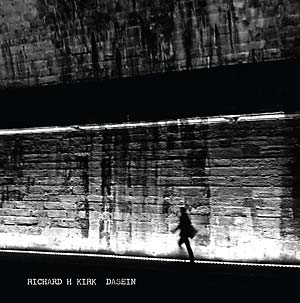 The usually prolific Richard H. Kirk has been unsurprisingly quiet as of late. Playing shows as Cabaret Voltaire again (which I have conflicted feelings about) and a small reissue campaign via Mute and Die Stadt has been about the extent of his recent activity. Which, admittedly, is odd from a man who used to make up projects just to fill out his own solo compilation albums. So when first hearing about the new material that makes up Dasein being released, I was eager but unsure what to expect. Thankfully, the hiatus has done nothing to deter Kirk, who has put together yet another exceptional work of his own take on electronic music, and one that channels moments from his entire career.
The usually prolific Richard H. Kirk has been unsurprisingly quiet as of late. Playing shows as Cabaret Voltaire again (which I have conflicted feelings about) and a small reissue campaign via Mute and Die Stadt has been about the extent of his recent activity. Which, admittedly, is odd from a man who used to make up projects just to fill out his own solo compilation albums. So when first hearing about the new material that makes up Dasein being released, I was eager but unsure what to expect. Thankfully, the hiatus has done nothing to deter Kirk, who has put together yet another exceptional work of his own take on electronic music, and one that channels moments from his entire career.
As aforementioned, one thing Kirk has done in recent years is revive the Cabaret Voltaire name for some solo performances, and part of me is unsure why he did not opt to release Dasein under that name.While I feel conflicted about such a thing (CV has always felt like it should be Kirk and Mallinder together, with or without other members), the sound of this album does call to mind early CV, reframed for modern days and technology."Nuclear Cloud," for example, runs a standard electro synth sequence with some added outbursts of noise and squalling guitar, a trademark of those early days of Kirk’s work.There is a similar sound to "Let's Jack," but with a plethora of noisy sound effects, cut up voices, and wah heavy funk, it more resembles the work of the Bomb Squad than Cabaret Voltaire.
Other songs here feel more in sync with Kirk’s solo output from the 1990s."Do It Right Now" structurally feels like an almost disco piece with the synths amplified a bit, but bursts of static, bizarre voice processing (Kirk’s first use of his own voice in over a decade), and some added nearly off beat moments gives it that appropriate amount of improvised looseness that often peppers his work from that period.The same goes for the disjointed noise and dubby echoes throughout "New Lucifer/The Truth is Bad" that, after the beat slowly comes into focus, becomes a dirty, heavy, pounding bit of sinister electronic music.
There are also a significant number of unique moments that are not as easy to place in his timeline of work, but stand strongly and fit with his body of work nonetheless.The muffled and rhythms throughout "Lear Jet" become an accompaniment to a massive low end and cut up samples that become wonderfully dramatic and Wagnerian, what Laibach in an alternate reality could have done if they had not become so enamored with doing covers.These heavy moments are some of the best to be had on Dasein, such as the grimy sequencer that keeps "20 Block Lockdown" on edge from beginning to end.That dirt stays on the more electro/psychedelic tinged "Radioactive Water", which also features some additional harsh Kirk guitar playing.
Closing on the dark, guitar and FM synth driven "Sub / Antarctic / H‚ÇÇO," Kirk chooses to end a rhythm heavy record on a beat-less note, which summarizes the mood of this record wonderfully.Kirk has always injected his work with themes of surveillance, violent politics, and impending doom, all of which are relevant in the present day and becoming more and more so.Heavy rhythms abound on Dasein, but the mood is not one necessarily conducive to dancing, but maybe the perfect soundtrack for a little bit of doomsday prepping.
samples:
 
Read More
- Administrator
- Albums and Singles
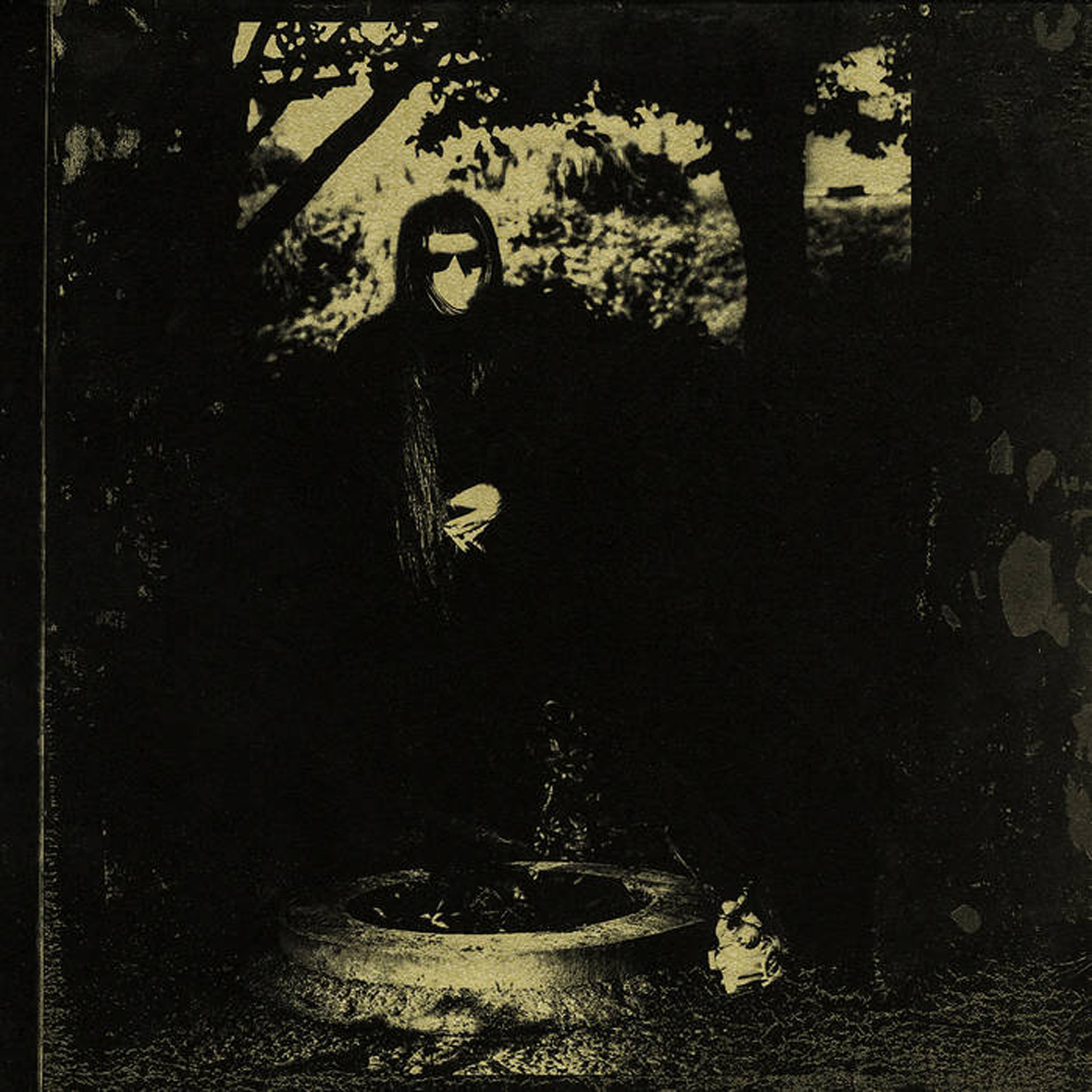 This is the debut release from Peter Kolovos's Black Editions, an imprint embarking upon the ambitious and necessary task of reissuing classic albums from Japan’s legendary and defunct P.S.F. label.  Naturally, Kolovos wanted to start with a bang, making Watashi Dake? an obvious choice: originally released back in 1981, it is the first solo release from the mercurial and iconic Keiji Haino.  Spontaneously composed at night in a completely dark studio (presumably while wearing sunglasses), these hermetic, haunted, and idiosyncratic songs make for quite a challenging and uncomfortable listen, but that is precisely the point: for better or worse, there is nothing else on earth quite like Watashi Dake?
This is the debut release from Peter Kolovos's Black Editions, an imprint embarking upon the ambitious and necessary task of reissuing classic albums from Japan’s legendary and defunct P.S.F. label.  Naturally, Kolovos wanted to start with a bang, making Watashi Dake? an obvious choice: originally released back in 1981, it is the first solo release from the mercurial and iconic Keiji Haino.  Spontaneously composed at night in a completely dark studio (presumably while wearing sunglasses), these hermetic, haunted, and idiosyncratic songs make for quite a challenging and uncomfortable listen, but that is precisely the point: for better or worse, there is nothing else on earth quite like Watashi Dake?
The most apt analogy that I can come up with for Keiji Haino’s career is that it is like someone handed a drunk, blindfolded bodybuilder a baseball bat and shoved him towards a piñata: it is messy, unpredictable, and sometimes a bit terrifying.  However, it is also almost always a compelling spectacle and I know that when (and if) he finally connects, it will be a hugely satisfying event.  To my ears, Haino connects beautifully on Watashi Dake? , though not until the 29-minute storm of feedback that closes the album ("Devotion").  Curiously, "Devotion" was not even part of the original album (released on Takafumi Sato's Pinakotheca label in 1981), but was added for the 1993 P.S.F. reissue.  It is also absent from the current vinyl reissue (it did not fit, obviously), but Black Editions got around that by including it in the download code that comes with the vinyl.  It is admittedly quite bizarre that an amazing longform piece which absolutely lays waste to the rest of the album did not make the original cut, but there were some interesting mitigating conflicts and philosophies that led to that state of affairs.  For one, "Devotion" was recorded live and Sato wanted Haino to make a proper studio album, which was something he never had any interest in ("for me studios are dead space").  That said, Haino did manage to include a couple of shorter live pieces on the formal album (some of the more memorable moments, in fact), so I guess both parties compromised a bit.  More significantly, Haino was quite intent on subverting everyone’s expectations for what a Keiji Haino solo album might sound like: if people associated him with long, howling guitar meltdowns, he wanted to do the exact opposite and make a quiet and intimate album of short pieces for just guitar and voice ("like an antithetical Keiji Haino").
Haino's vision was not purely contrarian, however, as he has stated "I had this really strong conviction that I wanted to record a 1920s country blues record that hadn’t been made yet."  Of course, after being filtered through Haino's aesthetic, the results are entirely recognizable as such.  That is especially true of the vocal-only opening "My Refuge," which sounds like a bizarre and cathartic performance art piece filled with primal howls, choked sobs, moans, exhalations, and odd silences.  As for the more musical pieces, they were significantly shaped by the darkness and improvisatory nature of the recording sessions, as Haino noted "I had this idea that I wanted to have to grope blindly on the guitar to find each individual sound, starting from nothing."  On one level, that is exactly what Watashi Dake? sounds like, albeit transfigured by Haino's sheer unconventionality and wild-eyed intensity.  He certainly gets some cool sounds in the process though, like the deep, seasick bowed strings of "More More More," the snarling and maniacal industrial repetition of "I Can't Do It Properly," and the weird and slippery sliding notes of "Bring To An End." For the most, however, these pieces are all brief, stark, discordant, and fitfully unfolding vignettes.  As such, they have limited appeal as "music," but instead provide a voyeuristic glimpse of a formidable artist wrestling with the void in real-time.  Obviously, the entertainment potential for the latter approaches nil, though it is understandably an exquisite treat for connoisseurs of underground music's darker and more arcane corners.  I am arguably part of that demographic, but the bizarre otherness of the album’s original content is an entirely different experience than the visceral firepower of "Devotion": I like unfiltered, daring artistic expression just fine, but "face-melting force of nature" will always trump "intriguing experiment."
Regardless of my feelings about the actual album, Black Editions definitely outdid themselves with this reissue, treating Watashi Dake? like the absolute Holy Grail of the Japanese underground: interviewing Haino, translating the lyrics, and packaging the album as Haino originally envisioned it (with metallic gold and silver artwork and a black-on-black lyric sheet). That reverence is certainly warranted to some extent, as this album was indeed an unprecedented magnum opus in its time: after playing with Haino in Japan, Fred Frith excitedly bought 15 copies to blow the minds of his friends (who included John Zorn and Bill Laswell).  Hearing it for the first time in 2017, however, it merely feels like an intensely personal and idiosyncratic experiment by an artist who is arguably better at unleashing hellish squalls of noise.  In a way, Haino’s freeform and discordant approach to songcraft paralleled Jandek's concurrent work from half a world away (albeit electrified and considerably more theatrical), though Haino sounds less like a lonely suicide than the sort of person who might publicly immolate himself as a conceptual art statement (an important distinction).  Back in 1981, however, almost no one would have had any reference points at all for what Haino laid to tape here.  I am not sure if that necessarily makes Watashi Dake? an ur-text that continues to resonate throughout the underground decades later, as few have any desire to emulate this album's strange and dark trip, but this album does legitimately still sound like it was dropped here from another dimension that has had virtually zero musical influence from our own.
 
Read More
- Administrator
- Albums and Singles

Percy Bysshe Shelley is what brought Caroline Crawley (RIP) and Jem Tayle together at first, forming the band in 1983 in Bournemouth, eventually signing to Rough Trade records in 1985.
Combining their love of all musical genres the duo created an unusual blend of pop on their debut Helleborine, utilising a full range of classical instruments, including some obscure ones, like the Strumento da Porca and tamboura. Their influences were diverse as well, as anything from Joy Division to Sparks, Barry White and and Delius ebbed and flowed through their ethereal and pulsating sound. Yet above all, Shelleyan Orphan is a vocal band. This was illuminated with their next album, 1989s brilliant and critically acclaimed Century Flower, produced by Dave Allen (The Cure, Human League). Following the release, the band toured supporting The Cure throughout Europe and America gaining a wider fan base.
The third album, 1992’s Humroot once again found the duo implementing their love of musical combinations. It found its way to their fanbase and enabled them to continue playing for a few years.
After that, Caroline and Jem took a long break from the music industry, coming together occasionally but not as Shelleyan Orphan, until the release of their final, critically acclaimed CD, We Have Everything We Need.
This limited edition box-set contains remastered, repackaged complete albums of Helleborine, Century Flower and Humroot, as well as a new nineteen-track bonus disc. Including is an unreleased BBC Radio 1 Session containing unearthed versions of ‘Cavalry of Cloud’ and ‘Melody of Birth’, as well as a slew of unreleased demos chronicling all three albums, and an unearthed session tracks with Art of Noise’s Anne Dudley, featuring Geoffrey Bayldon of Catweazle fame. In addition, the boxset comes packaged with a DVD (6 videos) and an essay penned by Crawley and Tayle, before her untimely death of Crawley, exploring in deeper depth the story that is Shelleyan Orphan. This is the first time Shelleyan Orphan’s back catalogue is compiled together, further illuminating the songwriting and vocals skills of one of England’s best pop purveyors.
Includes a hand-written letter from Jem Tayle in light of Caroline’s death last year.
Track Listing:
CD 1:
Helleborine
1. Southern Bess (a field holler)
2. Anatomy of love
3. Blue black grape
4. Jeremiah
5. Cavalry of cloud
6. Midsummer pearls and plumes
7. Epitaph ivy and woe
8. Helleborine
9. One hundred hands
10. Seeking bread and heaven
11. melody of birth.
CD 2:
Century Flower
1. Shatter
2. Timeblind
3. Tar baby
4. self
5. Summerflies
6. The silent day
7. Century flower
8. Amanita muscaria
9. between two waves
10. A few small hours
CD 3:
Humroot
1. Muddied up
2. Dead cat
3. Fishes
4. Burst
5. Sick
6. Little death
7. Big sun
8. Dolphins
9. Mull
10. Long dead flowers
11. Swallow
12. Supernature on a Super Highway.
CD 4 Bonus disc:
1. Cavalry Of Cloud (Live at BBC Radio 1, 1984)
2. Melody Of Birth (Live at BBC Radio 1, 1984))
3. Cavalry Of Cloud Medley ( Anne Dudly 1985)
4. Theme with Geoffrey Bayldon (Anne Dudley 1985, b-side)
5. Harmony Drone (b-side)
6. Anatomy Of Love ( US version)
7. Southern Bess ( demo version)
8. Epitaph Ivy And Woe ( demo version)
9. Century Flower ( demo version)
10. Silent Day (demo version)
11. Self (demo version)
12. Shatter (instrumental monitor mix)
13. Fishes (monitor mix)
14. Sick (demo version)
15. The Little Death (demo version)
16. Dolphins (monitor mix)
17. Hide My Smile (demo version)
18. Space (demo version)
19. Evolute (demo version)
DVD:
1. Anatomy of Love (the Tube)
2. Epitaph Try and Woe (The Tube)
3. Calvary of Cloud (video)
4. Shatter (Video)
5. Burst (Video)
Read More
- Administrator
- Albums and Singles

"First full-length in seventeen years from the Chain Reaction/Force Inc. legends. Ever since their initial singles were released in the mid-1990s and became international calling cards for the Chain Reaction label, the Porter Ricks duo of Thomas Köner and Andy Mellwig have represented that crucible point in which techno music leaked into new social environments and became the background music for cutting-edge cultural critique. Their submerged "scuba" sound, presented in dark tone colors and reverberating to infinity, is now instantly identifiable as one of the "soundmarks" of Berlin club culture. Just as importantly, it is still a palpable aftershock of a pre-millenial genre explosion that saw deep dub, shimmering post-rock, abstract hip-hop, and art-damaged noise all drinking from the same well of inspiration.
For proof of Porter Ricks's enduring legacy, look no further than the fact that "dub techno" is now a stylistic movement that has expanded far beyond the confines of Berlin and the Basic Channel/Chain Reaction label alliance (where Mellwig's mastering skills also played a starring role). Lurid traces of Porter Ricks's aesthetic can now be found in the work of producers like Andy Stott and Miles Whittaker, showing the potential for the duo's unique "aquatic" techniques to be applied to a variety of different musical contexts. Their new LP on Tresor, Anguilla Electrica, may be their first full-length release in seventeen full years, but it radiates with confidence and with a clarity and intensity rarely seen in a world so over-saturated with communications noise. It's made clear at once that it's a continuation of a sonic ideal rather than a tribute to what has already been achieved: the duo is not idly sitting back while their newer acolytes do their talking for them. This new LP is well worth the wait and is a life-affirming one in an uncertain and perilous time, drowning out daily anxieties like a rush of incoming surf -- yet it is far more invigorating than relaxing. True to the Porter Ricks's tradition, it will be just as exciting hearing this music as it will be to experience what new cultural mutations it leaves in its wake."
-via Forced Exposure
Out June 30th, 2017 on Tresor.
Read More
- Creaig Dunton
- Albums and Singles
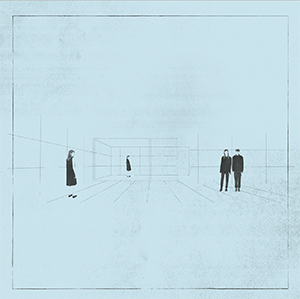 We at Brainwashed are delighted to pair with Medical Records to debut "Follow It Down" from Marker. For his first full-length release under that name, New Orleans' own Mike Wilkinson takes the standard guitar/bass/drum sound, mutates it, and then reassembles it brilliantly on this self-titled debut. "Follow It Down" is an excellent sampler of what will be on next month’s album. Blissfully demolished guitar sounds are mixed with upfront bass lines to create a hazy fog in which a steady drum machine and Wilkinson's lonely, isolated vocals slowly glide through. He brilliantly shuffles the mix around, and allows it to dissolve into an ecstatic wall of sound, with shards of melody still shining through the otherwise comfortable, yet impenetrable abyss. Look for the full album from Marker in mid-July.
We at Brainwashed are delighted to pair with Medical Records to debut "Follow It Down" from Marker. For his first full-length release under that name, New Orleans' own Mike Wilkinson takes the standard guitar/bass/drum sound, mutates it, and then reassembles it brilliantly on this self-titled debut. "Follow It Down" is an excellent sampler of what will be on next month’s album. Blissfully demolished guitar sounds are mixed with upfront bass lines to create a hazy fog in which a steady drum machine and Wilkinson's lonely, isolated vocals slowly glide through. He brilliantly shuffles the mix around, and allows it to dissolve into an ecstatic wall of sound, with shards of melody still shining through the otherwise comfortable, yet impenetrable abyss. Look for the full album from Marker in mid-July.
Click here to stream "Follow It Down" via SoundCloud
Read More
- Administrator
- Albums and Singles
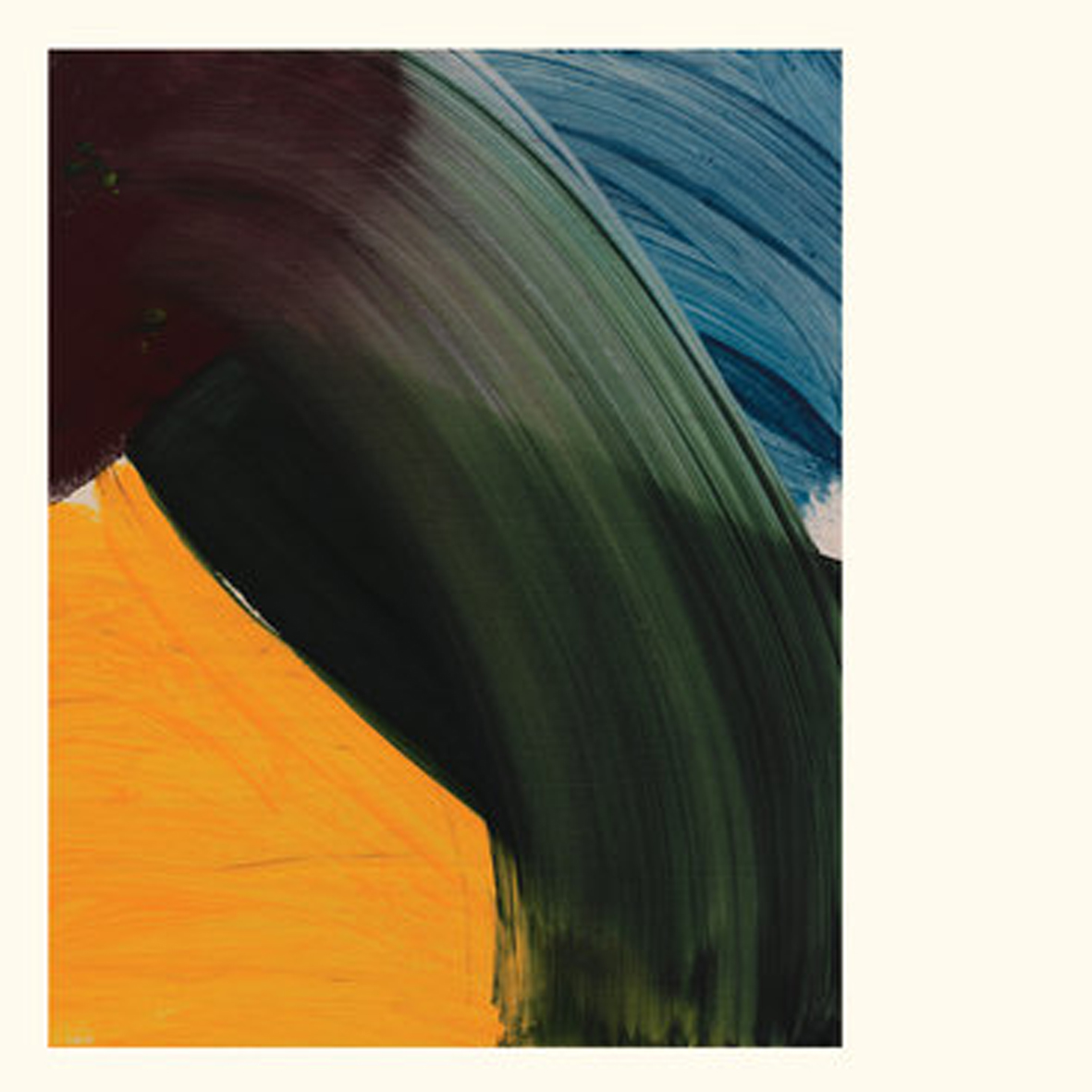 When I first heard the absolutely gorgeous lead single ("A Song of Summer") from On The Echoing Green, I started salivating immediately about the prospect of an entire album in that vein, as it seemed like Cantu-Ledesma had finally transformed his experimental guitar shimmer into pure dreampop/shoegaze heaven (a direction he had been headed for a while).  One thing I failed to fully register at the time, however, was that the delirious pop bliss of "A Song of Summer" was stretched out for a very un-pop eleven goddamn minutes.  That curious and arguably self-sabotaging decision more or less summarizes this entire release, as Echoing Green is not so much a dreamy and hook-filled pop masterpiece so much as it is yet another characteristically abstract and experimental guitar album from Jefre (albeit one with a handful of riffs and melodies that plenty of more accessible artists would happily kill for).  That said, the few fully formed songs capture Cantu-Ledesma at the absolute peak of his powers, even if Echoing Green as a whole falls shy of the lushly beautiful pop breakthrough that it could have been.
When I first heard the absolutely gorgeous lead single ("A Song of Summer") from On The Echoing Green, I started salivating immediately about the prospect of an entire album in that vein, as it seemed like Cantu-Ledesma had finally transformed his experimental guitar shimmer into pure dreampop/shoegaze heaven (a direction he had been headed for a while).  One thing I failed to fully register at the time, however, was that the delirious pop bliss of "A Song of Summer" was stretched out for a very un-pop eleven goddamn minutes.  That curious and arguably self-sabotaging decision more or less summarizes this entire release, as Echoing Green is not so much a dreamy and hook-filled pop masterpiece so much as it is yet another characteristically abstract and experimental guitar album from Jefre (albeit one with a handful of riffs and melodies that plenty of more accessible artists would happily kill for).  That said, the few fully formed songs capture Cantu-Ledesma at the absolute peak of his powers, even if Echoing Green as a whole falls shy of the lushly beautiful pop breakthrough that it could have been.
The unusual way that Echoing Green was composed and recorded goes a long way towards explaining why it ultimately took the shape it did.  Most notably, this is the first of Jefre Cantu-Ledesma's solo albums in which he is backed by an approximation of a full band, although it is more like a shifting ensemble of like-minded multi-instrumentalists.  To fully get the most spontaneity and organic magic from this atypically collaborative endeavor, Cantu-Ledesma began the sessions with no songs already demoed.  He definitely had a strong general vision though, as all of the more song-like pieces are very much shaped by his blearily twinkling guitar shimmer and his love of sparse, slow-motion drum machine beats.  Obviously, the downside to composing an album in such a live and collaborative fashion is that tight songcraft and structure tend to be sacrificed in favor of vamping on a theme.  Echoing Green definitely does not avoid that peril, though Cantu-Ledesma and his cohorts do manage to keep one of the album's stronger singles ("Tenderness") to a comparatively lean 5-minutes.  "Tenderness" is also notable for a couple of other reasons, both quite favorable.  For one, it is one of the two pieces to feature Argentinian vocalist Paula Garcia (Sobrenadar), who arguably plays the largest role of anyone in elevating the album’s highlights into something evoking classic 4AD dreampop nirvana.  Speaking of 4AD, the other significant feature of "Tenderness" is that it is one of the strongest distillations of Cantu-Ledesma’s "Cocteau Twins-plus-killer-guitar-hooks" aesthetic.
"A Song of Summer" is the true centerpiece of the album, however, reprising everything that is wonderful about "Tenderness" with an even stronger bent-string guitar hook and a lovely swirl of lush synthesizer work from Arp's Alexis Georgopolus.  Granted, the excessive length makes it a flawed masterpiece rather than an outright one, but there are far worse crimes than dissolving into an extended trebly haze of guitar noise (especially if it eventually coheres into a blurred and spectral reprise of the central theme for the outro).  "The Faun" performs a similar feat of sweeping Romanticism and cool guitars, impressively managing to stay dynamic and melodic enough to make me forget that there is no vocalist.  As for the remaining songs, they are not necessarily weaker material, but they are a lot less song-like.  That is an odd thing for me to grumble about, as I have loved Cantu-Ledesma's purely instrumental albums in the past and I always enjoy tape experiments, but the high proportion of more experimentally minded, incidental fare gives Echoing Green a somewhat unfinished and uneven feel.  Most are brief texture or mood pieces, alternating between languorous and tender chorus-heavy arpeggios, cryptic field recordings, snarls of noise, and celebrations of tape hiss, but there is one more substantial piece near the end of the album: "Dancers At The Spring."  Curiously, it takes a very different tone than the other major pieces, opting for a more shuffling, understated, meandering, and stark approach.  It is certainly enjoyable, but errs a bit too much on the side of "pastoral" for me.
This is the rare album that somehow manages to simultaneously exceed my expectations and leave me feeling unsatisfied and exasperated.  Regarding the latter, I have an unavoidable tendency to judge artists who I actively follow a bit more critically than those I do not, but Echoing Green objectively feels like a missed opportunity to me: when I hear the heights Cantu-Ledesma hits in "A Song of Summer," I cannot help but feel that this could have been a strong Album of the Year contender with a bit more work.  Instead, it seems like this ensemble found the perfect formula for greatness, made a few jamming variations on it, then moved on to filling the rest of the album with brief soundscapes and interludes.  I wish I could have volunteered to buy them more studio time.  On the plus side, I had absolutely no idea I could even expect something like "A Song of Summer" from Cantu-Ledesma, as I would have been perfectly happy with another instrumental album.  Thanks to a pair of would-be perfect pop songs, my expectation are now hopelessly recalibrated.  That is definitely a good thing, which I suppose makes On the Echoing Green an uneven yet fitfully transcendent album.
 
 
Read More

